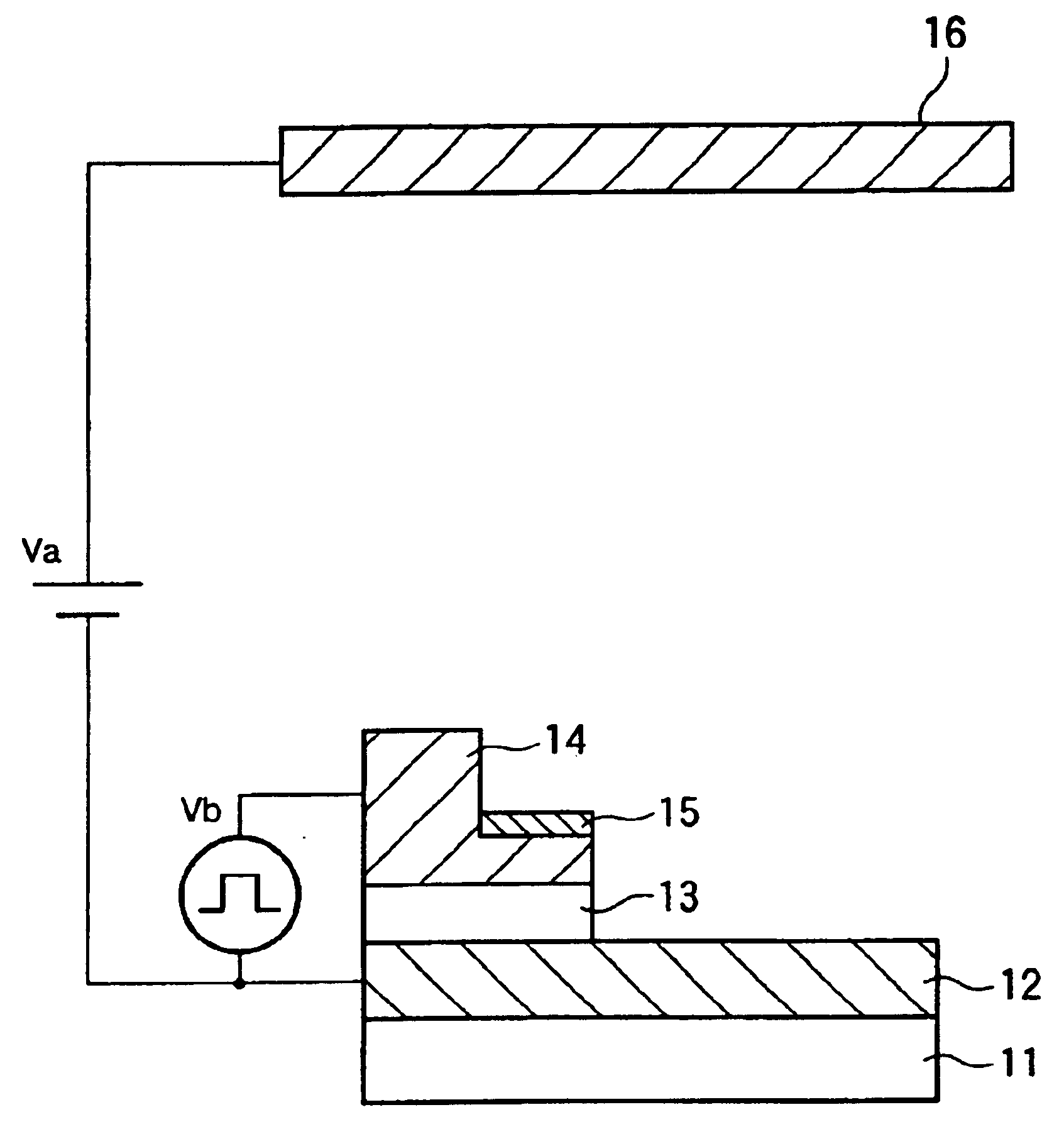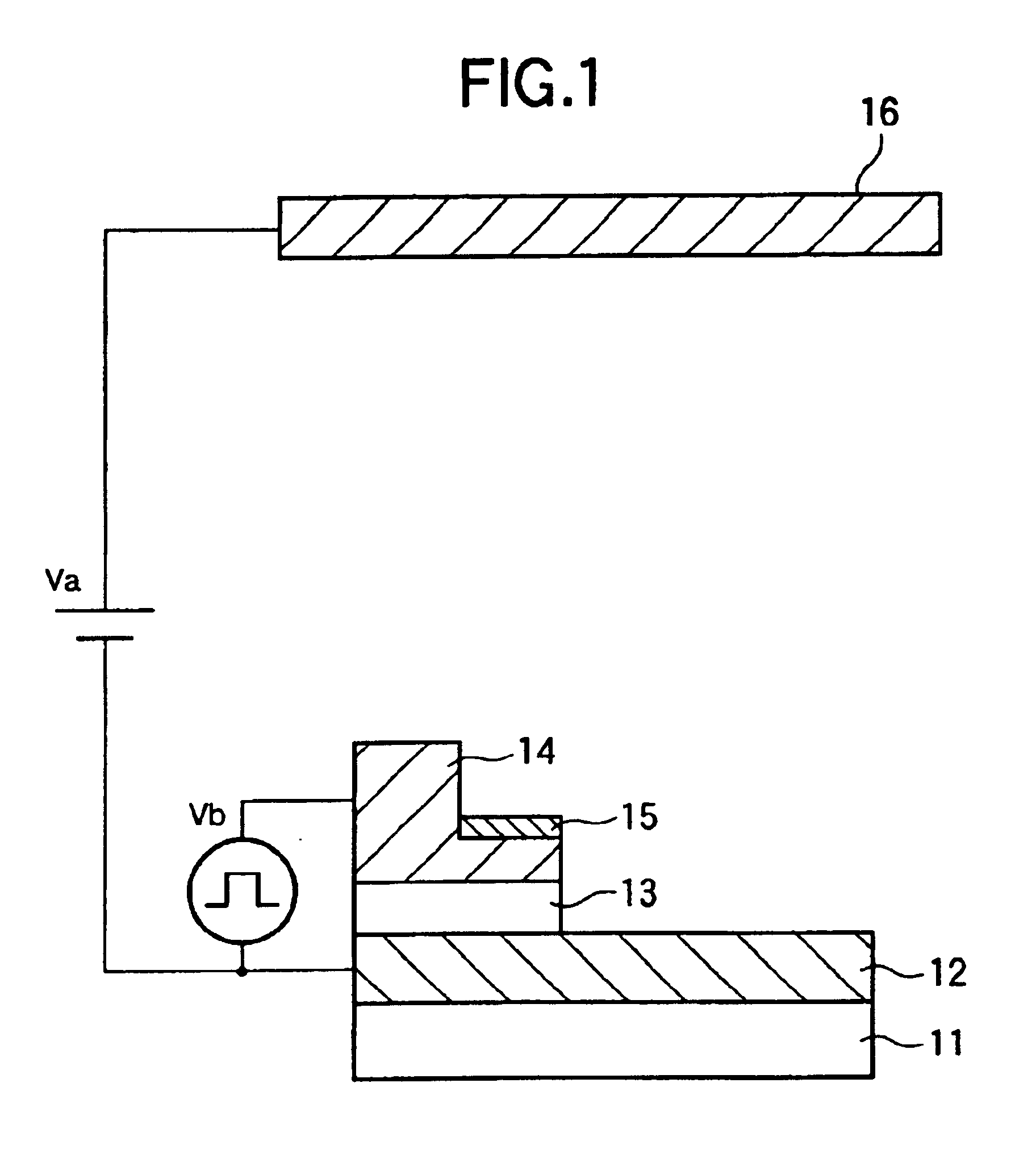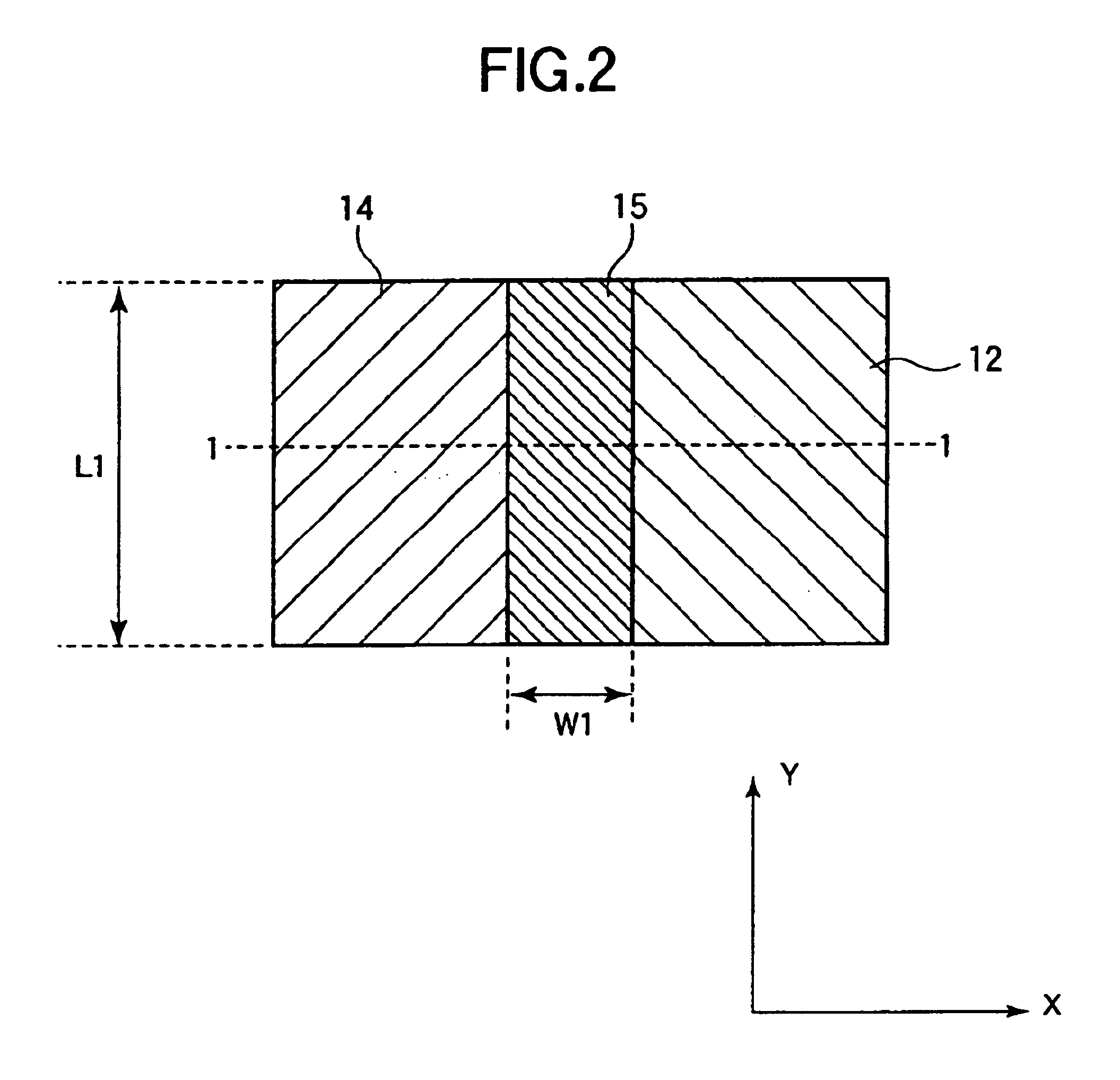Method of driving image-forming apparatus and apparatus thereof
a technology of image-forming apparatus and drive mechanism, which is applied in the field of driving image-forming apparatus and its associated apparatus, to achieve the effects of uniform electron-emitting characteristics, small beam diameter and easy production
- Summary
- Abstract
- Description
- Claims
- Application Information
AI Technical Summary
Benefits of technology
Problems solved by technology
Method used
Image
Examples
first embodiment
[0104]FIG. 2 is a plan view of the electron-emitting apparatus of the first embodiment, FIG. 1 is a cross sectional view of the electron-emitting apparatus, and FIGS. 5A to 5G show a method of manufacturing the electron-emitting apparatus. The method of manufacturing the electron-emitting apparatus of this embodiment is described in detail below.
(Step 1)
[0105]First, as shown in FIG. 5A, with a sputtering method, the first electrode 12 that is an Al film having a thickness of 300 nm, the insulating layer 13 that is an SiO2 film having a thickness of 100 nm, and the second electrode 14 that is a Ta film having a thickness of 400 nm are stacked in this order on the substrate 11 that is a sufficiently cleaned quartz glass.
(Step 2)
[0106]Next, as shown in FIG. 5B, a photomask pattern of a positive photoresist (AZ1500 manufactured by Clariant) is formed by spin coating, and is exposed to light and developed with a photolithography method to obtain a mask pattern 18. Then, as shown in FIG. ...
third embodiment
[0117]A schematic cross-sectional view of the electron-emitting device manufactured in the third embodiment is shown in FIG. 1. In this embodiment, the applied voltage Va is increased so as to improve the current amounts of emitted electrons. The following description centers on the characteristics points of this embodiment and therefore the same points as in the aforementioned embodiments are omitted.
[0118]In this embodiment, the voltage Va applied to drive the electron-emitting device of the first embodiment is set at 15 kV and the distance D1 between the electron-emitting film 15 and the anode 16 is set at 2 mm.
[0119]The electron-emitting device performs electron emission by means of the electric field formed by the anode voltage, so that the increased anode voltage improves the current amounts of the emitted electrons in this embodiment. At the same time, however, the area from which electrons are emitted is also extended and therefore the beam diameter of the emitted electrons ...
fourth embodiment
[0126]FIG. 11 is a schematic cross-sectional view of the electron-emitting device manufactured in this embodiment. This embodiment relates to a construction where an insulating layer 13b is inserted between the electron-emitting film 15 and the second electrode layer 14b of the electron-emitting device of the It will become apparent from this embodiment that there occurs no change in the characteristics of the electron-emitting device even with the construction where the insulating layer 13b is sandwiched between the components. The following description centers on the characteristics points of this embodiment and therefore the same points as in the above-mentioned embodiments are omitted.
[0127]Similarly to the fourth embodiment, the first electrode 12, the insulating layer 13a, the second electrode layer 14a, and the electron-emitting film 15 are laminated on the substrate 11. Then, the insulating layer 13b that is an SiO2 film having a thickness of 100 nm and the second electrode...
PUM
 Login to View More
Login to View More Abstract
Description
Claims
Application Information
 Login to View More
Login to View More - R&D
- Intellectual Property
- Life Sciences
- Materials
- Tech Scout
- Unparalleled Data Quality
- Higher Quality Content
- 60% Fewer Hallucinations
Browse by: Latest US Patents, China's latest patents, Technical Efficacy Thesaurus, Application Domain, Technology Topic, Popular Technical Reports.
© 2025 PatSnap. All rights reserved.Legal|Privacy policy|Modern Slavery Act Transparency Statement|Sitemap|About US| Contact US: help@patsnap.com



